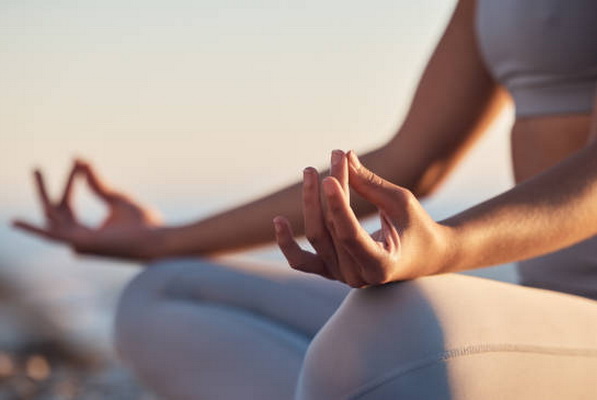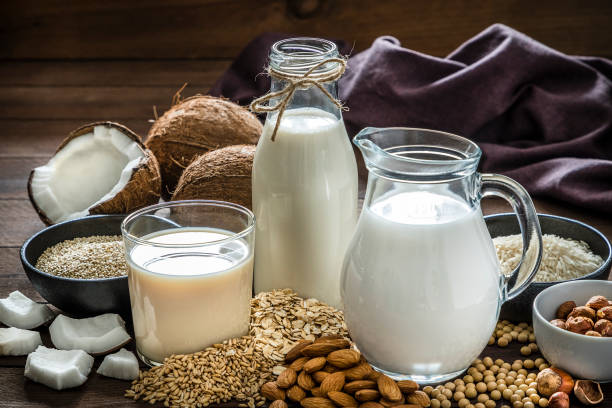Posted by Elegant Nails & Beauty by Sue on
This month’s blog is all about unlocking the beauty secrets of apple cider vinegar.
This liquid gold has been cherished for centuries, not only in salad dressings but also as a potent elixir for radiant skin.

Are ready to elevate your skin care routine with a humble kitchen staple?
Look no further than apple cider vinegar (ACV)!
Let’s explore the many benefits Apple Cider Vinegar will bring to your beauty routine, together with expert-approved secrets to maximise its potential.
Secret #1. ACV fades Age spots
ACV acts as a gentle exfoliant, helping to slough off dead skin cells. These cells can contribute to the appearance of age spots.
The alpha-hydroxy acids (AHAs) in ACV work similarly to chemical peels. They gently remove the outer layer of dull skin, revealing fresher, brighter skin underneath.
Balancing Skin pH and Lightening Pigmentation:
ACV helps balance the skin’s pH level, which can contribute to fading dark spots.
It contains acetic acid, which research suggests may lighten pigmentation.
ACV’s astringent properties can help fade sunspots and age spots over time.
Those pesky little marks don’t stand a chance when Apple Cider Vinegar steps onto the scene!
Combine equal parts of raw apple cider vinegar and water in a container.
Apply this solution directly to your dark spots using a cotton ball.
Leave it on for two to three minutes.
Rinse with lukewarm water.
Repeat this process twice daily until you achieve the desired results.
Consistency is key, so repeat this process regularly for best results.
Secret #2. ACV Face Wash
Apple Cider Vinegar acts as a natural cleanser, helping to remove oil, dirt, and debris from your skin.
Its astringent properties can help maintain the skin’s pH levels, which is essential for healthy skin.
If you’re tired of harsh soaps or chemical-laden cleansers, consider using ACV as a gentle alternative.
Combine
1/4 cup warm water
1 tablespoon of apple cider vinegar
Use this mixture as a face wash. Gently massage it onto your skin, then rinse thoroughly.
Remember to patch-test first, especially if you have sensitive skin1.
Additional Tips:
For sensitive skin, dilute ACV further if needed. Some people find a 1:2 ratio (1 part ACV to 2 parts purified water) more suitable.
Follow up with a moisturiser to keep your skin hydrated.
If you’re dealing with specific skin concerns (like acne), consider using ACV as a toner or spot treatment as well4.
Secret #3. ACV Face Mask
Apple cider vinegar (ACV) is like a little superhero for your skin—it swoops in with its natural powers and helps address various skincare concerns.
Let’s explore the benefits of using ACV as a face mask and how it can contribute to your radiant glow!
Helps prevent pimples and acne:
ACV has antifungal and antibacterial properties, making it a formidable opponent against acne-causing bacteria, excess oil, and dust.
Not only does it prevent acne growth, but it also aids in healing old acne marks. Say goodbye to those pesky blemishes!
Exfoliates and soothes the skin:
ACV contains alpha-hydroxy acids (AHAs), such as acetic acid.
These AHAs gently exfoliate your skin, bidding farewell to dead cells.
The result? Softer, smoother, and younger-looking skin. Imagine waking up feeling like you’ve just had a spa day!
Heals Sunburnt Skin:
Got a sunburn? ACV to the rescue! Its soothing properties alleviate the pain caused by sunburn.
Plus, it promotes faster healing while gradually lightening the affected area. Sun-kissed, not sun-fried!
Balances skin pH and more:
ACV’s astringent properties help maintain your skin’s pH levels. Balanced skin is happy skin!
It’s like a gentle reset button—removing dead skin cells, minimizing fine lines, and even helping with scarring, redness and pigmentation (begone those pesky dark spots).
Create a simple face mask by mixing
- 1 tablespoon of ACV to 2 tablespoons of water (to dilute)
- 1 teaspoon of honey (for added moisture and antibacterial benefits).
Apply it to freshly cleansed face (avoiding eye area).
Leave mask on for 10-15 minutes, and rinse off with lukewarm water.
Pat skin dry and follow up with your favourite moisturiser.
Tip: Use this mask once or twice a week and your skin will thank you!
Secrets #4: ACV Toner
Say hello to a more even-toned complexion.
Apple Cider Vinegar makes a great face toner because it balances the natural pH of your skin. When your skin’s pH is in harmony, it functions optimally.
It also helps break up the bonds between dead skin cells, keeping your pores open and preventing congestion.
Imagine ACV as a friendly referee, ensuring your skin plays by the rules!
Ingredients:
Raw, unfiltered apple cider vinegar
Filtered water
Optional: A few drops of essential oils (such as lavender or tea tree), a hydrosol (like rose water), or witch hazel
Instructions:
Measure and Mix:
Pour the apple cider vinegar into a glass jar.
Add an equal amount of filtered water (e.g., 1 tablespoon ACV to 1 tablespoon water).
If desired, add a few drops of essential oil or other optional ingredients.
Shake It Up:
Give the mixture a good shake to combine all the ingredients.
Application:
After cleansing your face, apply the toner using a cotton pad or your clean hands.
Gently pat it onto your skin, avoiding the eye area.
Let it air dry or follow up with your favourite serum or moisturiser.
Storage:
This toner is shelf-stable and can be stored in your bathroom cabinet.
No need to refrigerate; just keep it away from direct sunlight.
Secret # 5: ACV Spot treatment for acne
For pesky pimples, apply a drop of undiluted Apple Cider Vinegar directly to the blemish using a cotton swab.
Its antimicrobial action may help reduce bacteria and inflammation.
Dab a small amount of undiluted apple cider vinegar directly onto blemishes using a soaked cotton swab or cotton ball.
Its antibacterial properties may prevent pimples from fully forming as well as reduce bacteria, redness and inflammation.
Secret #6: ACV Hair Rinse
Clarifying and Detangling:
ACV acts as a natural clarifier, helping to remove product build-up, excess oil, and residue from your hair and scalp.
It also detangles your locks, making them more manageable and smooth.
Promoting a Healthy Scalp:
The antibacterial and antifungal properties of ACV can balance your scalp’s pH level.
If you struggle with dandruff or an overly oily scalp, ACV might be your new best friend. It helps prevent yeast build-up and keeps your scalp happy.
Reducing Colour Fading:
For those with colour-treated hair, ACV can be a game-changer. It helps close the hair cuticles, preserving your colour’s vibrancy.
Say hello to longer-lasting, more vibrant hair hues!
Instructions:
Mix raw ACV with water in a 1:3 ratio (for example, 1 tablespoon of ACV with 3 tablespoons of water).
Apply the mixture to damp hair, starting from the roots and working your way down.
Massage it into your scalp and let it sit for about 5 minutes.
Rinse thoroughly. Don’t worry—the vinegar scent won’t linger; your hair will smell fresh and clean!
Remember, consistency matters. As a general rule, use ACV as a hair rinse once a week (though this can vary based on your hair type and the specific product formulation). And if you’re feeling fancy, pair it with a moisturizing hair mask for an extra treat!
Remember, patch-test first! Especially if you have a sensitive scalp!
Secret #7: ACV Soothe sunburn
Apple cider vinegar (ACV) has been a popular home remedy for various purposes, but let’s talk specifically about its potential role in soothing sunburns.
The Good News:
ACV contains malic acid, an alpha-hydroxy acid that can speed up the healing process of sunburned skin by stimulating blood circulation.
Its acetic acid content acts as an anti-inflammatory agent, providing relief from swelling, redness, and pain.
A Cautionary Note:
ACV is acidic, and high concentrations may cause a burning sensation. So, it’s crucial to dilute it properly before applying it to your skin.
There’s no one-size-fits-all vinegar-to-water ratio, but err on the side of caution and make sure it’s well diluted.
Some methods you can try include:
Filling a spray bottle with diluted ACV and water to spray on sunburned skin.
Dipping a washcloth in diluted ACV, wringing it out, and gently patting it on the affected areas.
Taking a cool bath with diluted apple cider vinegar.
What the Experts Say:
The Mayo Clinic and the American Academy of Dermatology recommend taming sunburn with cool tap water—either using compresses or by bathing.
So, while ACV has its fans, it’s essential to be mindful of individual reactions.
Sunburns are no joke! They represent damage to your skin cells, and over time, that damage can lead to skin cancer. So, prevention (hello, sunscreen!) is key.
And if you’re looking for an alternative to ACV, consider adding a few bags of green tea to a cool bath.
Green tea has anti-inflammatory properties that can help soothe and heal damaged skin. Plus, it won’t smell like a salad dressing!
Cooling Oatmeal and ACV Bath:
Ingredients:
1 cup ground oats (yes, the same oats you’d use for breakfast)
½ cup baking soda
¼ cup apple cider vinegar
Instructions:
Combine the ground oats and baking soda in a sealed container.
Draw a warm (but cool enough) bath.
Add ¼ cup of the baking soda-oat mixture along with the apple cider vinegar.
Soak for about 15 to 20 minutes (no longer, or you risk drying out your skin).
After your soothing soak, generously apply an alcohol- and fragrance-free lotion, coconut oil, or aloe vera to those tender areas. Let your skin drink it all in!
Bonus Bath Options (because variety is the spice of sunburn relief):
Witch hazel (alcohol-free, please!)
Cucumber juice (cool as a cucumber, right?)
Dairy (milk, yogurt, or buttermilk): A milk bath calms the heat while its proteins work their anti-inflammatory magic.
Baking soda bath (because baking soda is like the Swiss Army knife of home remedies)
Chamomile, mint, or green tea baths: Brew a strong tea, add it to your bath, and let the healing begin!
ACV Spray (for targeted relief):
Mix equal parts ACV and water.
Pour the mixture into a spray bottle.
Spritz it directly onto your sunburned skin and let it dry.
It’s like a refreshing ACV mist—your skin will thank you!
Remember, hydration is key! So drink plenty of water and moisturize, moisturize, moisturize! And if your skin could talk, it might say, “Thanks for the TLC, and next time, sunscreen, please!’
Secret #8: ACV Foot Soak
Ah, the magic of apple cider vinegar even has a solution that’s oh so good for your feet!
(ACV) foot soaks are the best solution for your tired tootsies!
Benefits of an Apple Cider Vinegar Foot Soak:
Softens the skin on the feet:
ACV’s acid content gently breaks down those stubborn dead skin cells and calluses, making them easier to bid farewell to.
Result? Softer, smoother supple feet.
Helps remove foot odour:
Ever dealt with smelly feet after a long day? ACV to the rescue!
It’s natural antibacterial properties combat the bacteria responsible for foot odour.
Soak your feet in an ACV solution, and voilà—freshness restored!
Reduces the risk of fungal and bacterial Infections:
ACV’s antifungal and antibacterial powers make it a superhero against athlete’s foot, toenail fungus, and other pesky infections.
Your feet deserve this protective shield!
Helps relieve sore and tired feet:
After a day of conquering the world (or just running errands), your feet deserve a little pampering, soak those tired feet in ACV foot soak to bring some relief.
Instructions:
To make an ACV Foot Soak:
Mix warm water with raw, unfiltered apple cider vinegar (about 1 part ACV to 2-3 parts water).
Soak your feet for 15-20 minutes.
Dry your feet with a clean dry towel.
Remember, consistency is key!
Treat your feet to this delightful soak once or twice a week, and they’ll thank you by dancing through life.
Secret #9: ACV Wart Removal
Warts—those pesky raised bumps caused by the human papilloma virus (HPV)—can be quite stubborn.
Modern treatments include freezing them off, using topical creams with salicylic acid, laser therapy, or even surgical removal. But these methods can be costly and sometimes painful. Enter ACV, our humble kitchen companion.
How does ACV treat warts?
ACV contains acetic acid (the same stuff that gives it that tangy kick). This acid can kill certain bacteria and viruses on contact.
Treating warts with ACV will be a gradual destruction: when you apply ACV to a wart, it irritates the skin.
Slowly but surely, breaking down the infected tissue an dover time the wart will simply fall off.
Immune System Boost: The irritation caused by ACV also nudges your immune system into action. It wakes up your immune cells, saying, “Hey, team, let’s tackle this HPV invader!”
Instructions:
• Soak a cotton ball in a mixture of two parts ACV and one part water.
• Apply the cotton ball directly to the wart.
• Cover with tape or a bandage and leave it on overnight (or longer if possible).
• Repeat nightly until the wart falls off.
Remember these tips when using ACV:
• Always perform a patch test before applying it to your skin.
• If you have sensitive skin, consider diluting ACV further.
• Consult a dermatologist if you have any skin conditions or concerns.
Remember, always perform a patch test before using ACV on your face or any sensitive areas. And if you have any specific skin concerns, consult a dermatologist.
Cheers to radiant skin!
More Articles from our Blog…
7 Simple Ways to Self-Soothe for Stress Relief
Life can be stressful. Meeting daily responsibilities and navigating unexpected challenges – it’s easy to feel overwhelmed, stressed, and a…
8 Good Luck Rituals for a Happy New Year
Once the clock strikes midnight, and Auld Lang Syne has been sung, New year is traditionally the start of new…
Which milk is best for you?
With allergies on the rise it’s hard to know which milk is the best option for you. If you are…



